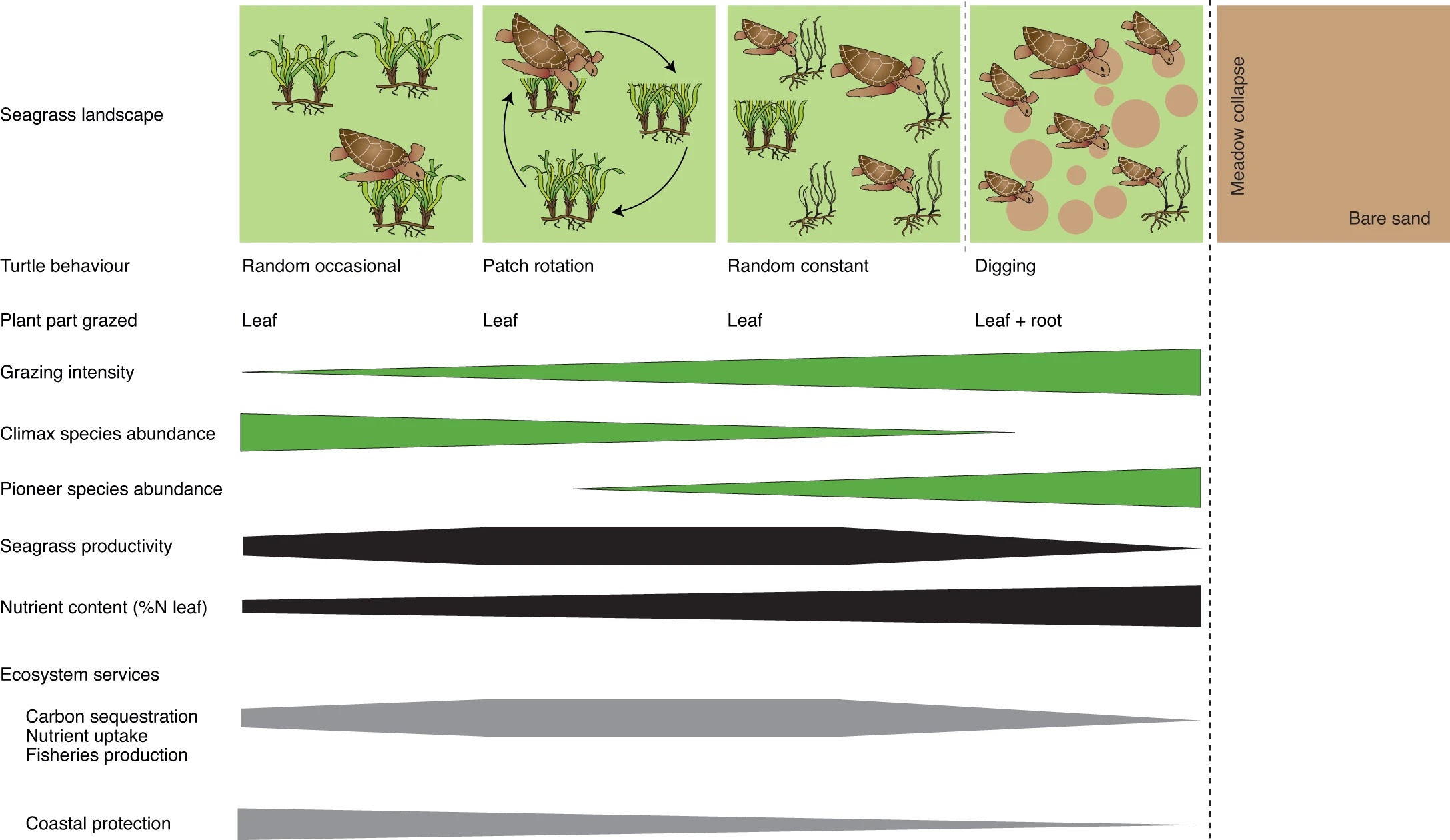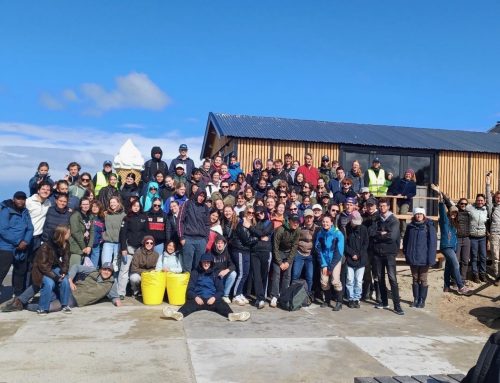Seagrasses are important for our coastal protection, biodiversity and carbon sequestration. But contrary to popular belief, dense, waving seagrass meadows with long foliage are not necessarily more natural. In a new publication in Nature Ecology & Evolution, researchers from Wageningen University & Research and Radboud University argue for a more nuanced picture of natural seagrass meadows being dense vegetation interspersed with areas grazed by sea turtles. This calls for a change in our nature management practices.

Concerted conservation efforts have led to a remarkable recovery of multiple green turtle populations in the world’s oceans. This is good news, but overgrazing may jeopardize the seagrass meadows and create underwater deserts. This is bad news, as seagrass meadows can help mitigate climate change, are important for coastal protection and are indispensable for biodiversity. Besides providing food for sea turtles and manatees, these ecosystems also create a nursery for fish.
Sea turtles graze lush seagrass vegetations down to shortly grazed lawns, resulting in a dynamic mosaic of areas at different grazing stages.
New perspective on degraded systems
“If you compare studies with observations from various habitats of sea turtles, you see that the seagrass meadows change due to grazing,” says Marieke van Katwijk, environmental researcher at Radboud University. “The dense areas change gradually into meadows with patches where mainly pioneer species of seagrass still thrive. Eventually these pioneer species will also decline, and the turtles start digging up the underground stems.”
“Scientists have been talking for some time about the misconception that terrestrial forests are pristine systems and savannas are degraded systems,” says Marjolijn Christianen, environmental researcher at Wageningen University & Research. “In this study we have shown that this misconception also applies to marine areas. Although this was unintentional, research has long neglected the role that grazing plays in nature restoration and conservation. This is partly because research on coastal ecosystems began only recently (from the 1970s), when the large marine grazers were already being overfished.”
Preventing the disappearance of seagrass
“But if the grazing continues for too long, seagrass meadows become extremely vulnerable and even a very small storm can wipe them out,” says Van Katwijk. “In that case it takes a very long time to restore a seagrass ecosystem. Moreover, once the seagrass disappears, the area is no longer legally protected and people can start building structures and harbours along the coast. We must prevent that from happening.”
These insights require a shift in our thinking and management, the researchers say. Christianen: “There is a potential conflict between striving for a seagrass ecosystem with optimal benefits for humans (such as coastal protection and food production), while at the same time striving for the recovery of populations of large charismatic animals such as sea turtles.”
To deal with this dilemma, the researchers propose accept partial loss of ecosystem services of the seagrass meadows. However, total loss should be prevented, because recovery from scratch is a slow process. Loss prevention can be achieved the protecting areas at the edge of collapse, for example by fencing, or by sowing free-living calcareous algae amongst the seagrass. This spiny coralline algae prevents sea turtles from grazing down to the base of the seagrass, where the growth points are located. Van Katwijk: “In a previous study we showed that these coralline algae effectively promote natural recovery.”
Christianen, M.J.A., van Katwijk, M.M., van Tussenbroek, B.I. et al. A dynamic view of seagrass meadows in the wake of successful green turtle conservation.Nat Ecol Evol (2021). https://doi-org./10.1038/s41559-021-01433-z
Twitter: The voracious feeding of returning green #turtle populations is radically transforming tropical #seagrass habitats in ways that prompt a re-think of the reference state and management plans for seagrass meadows.



